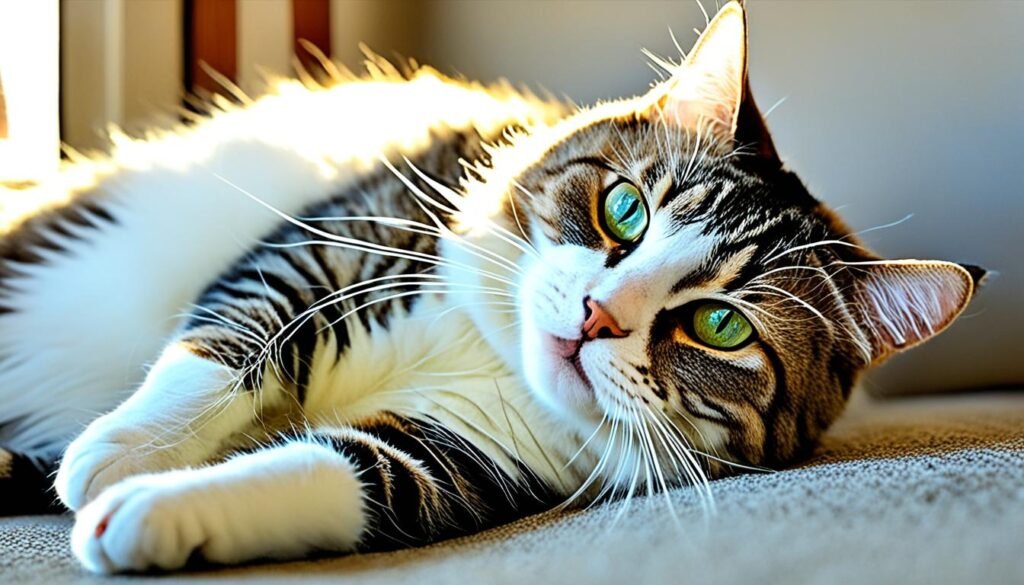Being a cat parent is a special thing. Our feline friends bring us joy with their playful ways, soothing purrs, and loving cuddles. But, have you thought about how to make sure your cat is really happy and doing well? In this guide, I’ll share easy yet powerful ways to boost your cat’s happiness and strengthen your bond.
Key Takeaways
- Understand your cat’s unique needs to provide a nurturing environment
- Learn to interpret feline body language and emotions
- Discover how to create a stimulating, cat-friendly space
- Explore interactive toys and playtime activities to keep your cat mentally engaged
- Implement positive reinforcement techniques to encourage desirable behavior
- Prioritize your cat’s emotional health for a well-rounded, happy life
- Develop a deeper connection with your feline companion
Understanding Your Cat’s Needs
Learning about cat body language and emotions is key to your cat’s happiness. By understanding their signs and needs, we can make sure they are happy and healthy. This helps us connect deeply with our feline friends.
Deciphering Feline Body Language
Cats talk a lot without words. By reading their body language, we can know what they feel and need. Things like their ear position, tail movement, and muscle tension tell us a lot. These signs help us understand their mood and behavior.
Providing Essentials for Well-being
Looking after your cat is more than just food and water. They need a clean home, good food, and clean water. But, they also need things for their mind and heart. This means a safe space with places to climb, hide, and toys that make them think and hunt.
Knowing what your cat needs helps you connect better with them. It makes their life happier and more rewarding. This knowledge helps make a cat-friendly home and keeps your pet happy and healthy.
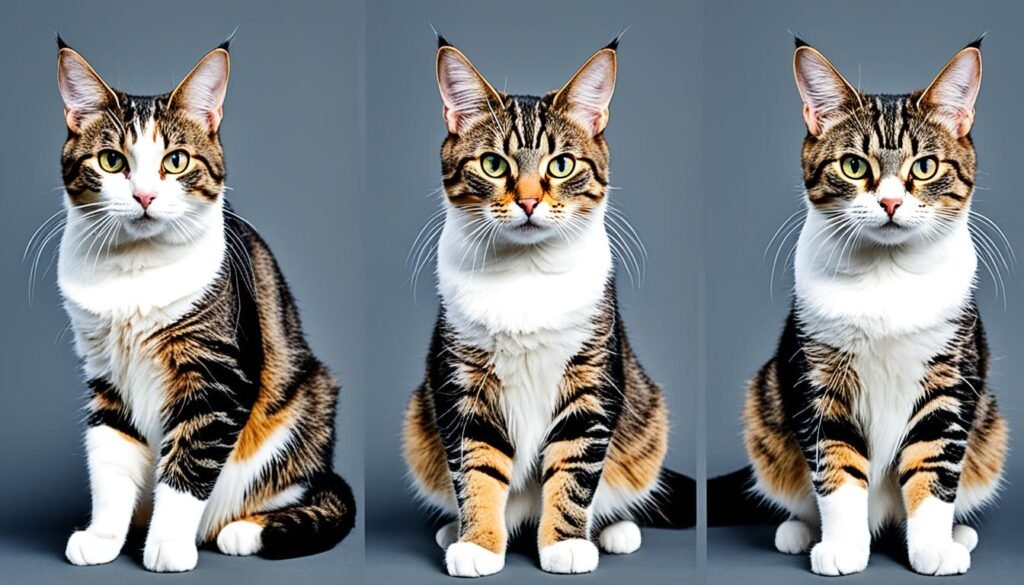
“The better we understand our animal companions, the better we will be able to ensure their well-being and honor their role in our lives.” – Jane Goodall
Creating a Cat-Friendly Environment
Making a space that’s just right for your cat is key to their happiness. By knowing what they like and need, you can make a place that’s safe, comfy, and fun. This makes their life better and brings you closer to your cat.
Here are some important things to think about:
- Vertical Space: Cats enjoy climbing and looking from high places. Give them cat trees, shelves, and spots by windows to do this.
- Hiding Spots: Cats like to hide in places like cardboard boxes, tunnels, or special beds. These spots let them rest and feel safe away from everyone.
- Scratching Surfaces: Cats need to scratch to mark their territory. Give them scratching posts or pads near where they sleep or walk a lot.
Adding fun things like puzzle feeders, toys that give treats, and toys that change can make your home better for your cat. These things keep them busy, help their minds, and stop them from getting bored.
“A well-designed cat-friendly environment not only meets your cat’s physical needs but also supports their emotional well-being.”
Every cat is different, so you might need to try a few things to see what works best for yours. By making a space that’s safe, comfy, and fun, you’ll see your cat do well and be happier.
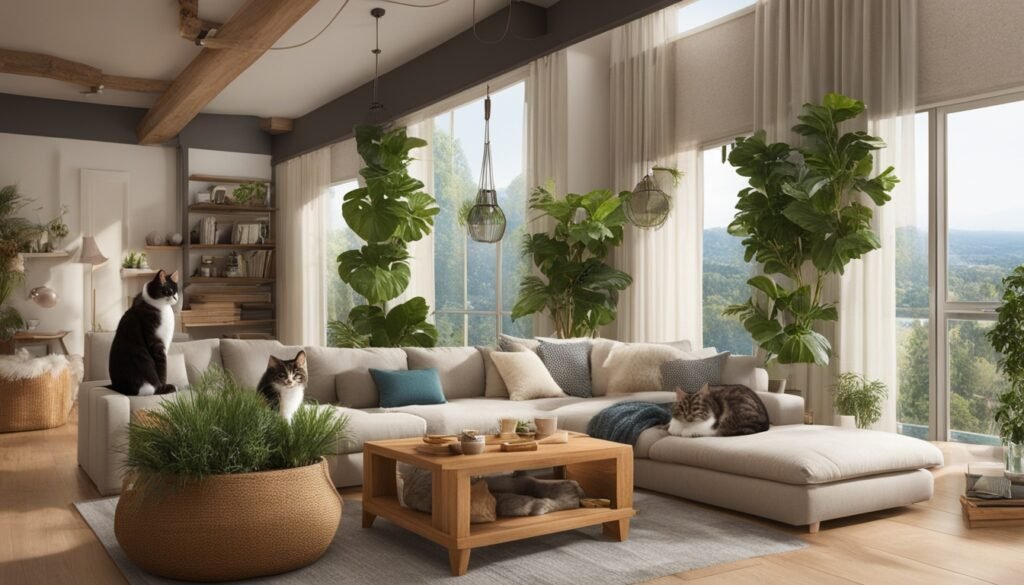
Keeping Your Cat Mentally Stimulated
Keeping your cat’s mind sharp is key to their happiness. Cats are curious and smart, needing mental challenges. Interactive toys and activities can keep their minds busy and stop boredom, which can lead to bad habits.
Interactive Toys and Playtime
Interactive toys are great for your cat’s playtime. They come in many types, like puzzle feeders and toys that move like prey. These toys keep your cat interested and happy.
- Wand toys with feathers or ribbons make your cat chase and pounce, fulfilling their natural instincts.
- Puzzle feeders and treat-dispensing toys make your cat think and work for their food, keeping their mind sharp.
- Catnip toys or balls make your cat playful, letting them bat, chase, and interact with the toys.
Playing with your cat is also key for their mental health. Spend 10-15 minutes a day playing with them. Use toys that move like prey or that they can hit, chase, and pounce on. This exercise and play satisfy their hunting instincts, keeping their minds active.
| Interactive Toy | Benefits |
|---|---|
| Wand Toys | Encourages natural hunting behaviors and provides physical activity |
| Puzzle Feeders | Challenges your cat to problem-solve and work for their food, promoting mental stimulation |
| Catnip-infused Toys | Triggers your cat’s playful instincts and encourages interaction |
Using different interactive toys and playing with your cat regularly helps keep their minds sharp. This prevents boredom and supports their overall health.
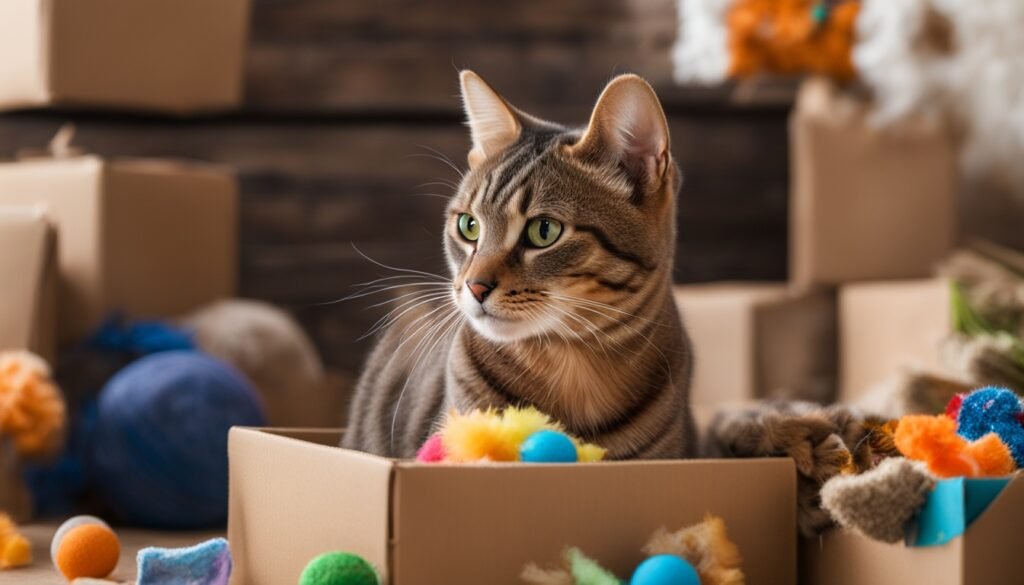
Promoting Positive Reinforcement
Positive reinforcement is a great way to improve your cat’s behavior. By rewarding good actions, you make your cat want to do those things more. This strengthens your bond and makes your cat happier and more well-adjusted.
Rewarding Good Behavior
When your cat does something good, like using the litter box or resting calmly, give them a treat or praise. This positive feedback encourages them to keep up these good habits. It makes your home a peaceful place for everyone.
- Offer small, healthy treats as a reward for good behavior
- Use verbal praise and affectionate petting to show your appreciation
- Avoid punishing your cat, as this can undermine trust and lead to more undesirable actions
Being consistent with positive reinforcement is important. Always reward your cat for good behavior. This helps them understand what you want and shapes their actions over time. Soon, you’ll have a more obedient and happy cat.
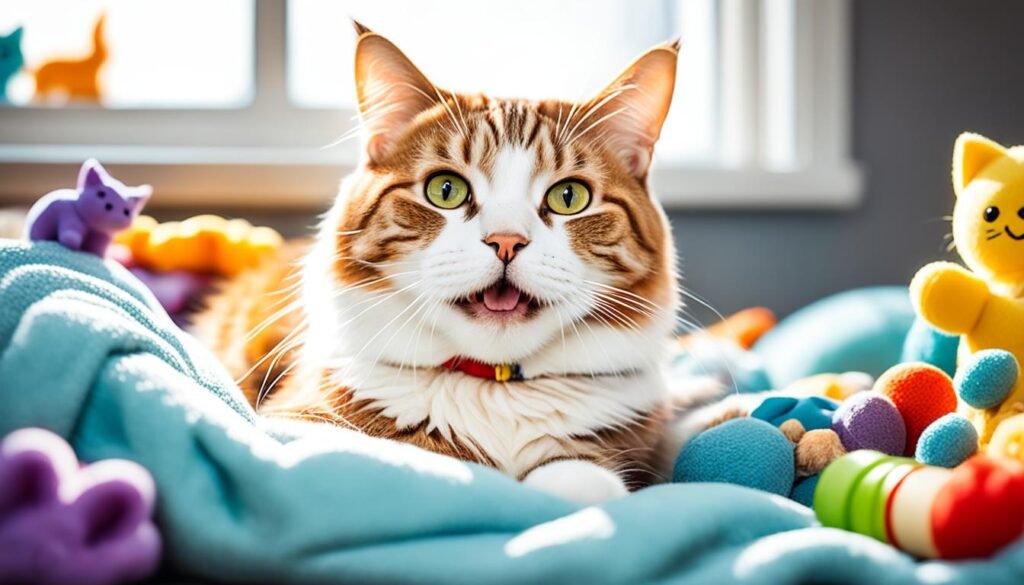
| Benefits of Positive Reinforcement | Drawbacks of Punishment |
|---|---|
| Strengthens the bond between you and your cat | Can damage the trust and communication between you and your cat |
| Encourages desired behaviors through positive feedback | May lead to your cat hiding undesirable behaviors from you |
| Promotes a calm, happy, and well-adjusted feline companion | Can increase your cat’s stress and anxiety levels |
“Positive reinforcement is the most effective way to train cats, as it builds trust and encourages the behaviors you want to see.”
Ensuring Your Feline’s Emotional Health
Cats have feelings just like us, and their happiness depends on their emotional state. As a cat owner, it’s key to know how to meet their emotional needs. By lowering stress and giving them activities that fit their personality, you keep their emotional health in check.
First, notice when your cat seems stressed. Look for signs like too much grooming, paw kneading, or hiding. These can mean they’re feeling anxious or not comfortable. By fixing these issues, you can make your cat feel better and more at ease.
Adding toys, perches, and places to hide can make your cat happy. These things let them explore, hunt, and feel safe. Also, playing with them often and rewarding good behavior can make your bond stronger. This makes your cat happier and more emotionally well.

